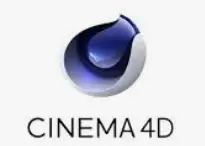Top 5 Animation Software for Creatives in 2024
Animation has come a long way since its inception, evolving from simple hand-drawn sequences to complex computer-generated imagery. Whether you’re a beginner looking to dip your toes into animation or a seasoned professional seeking the latest tools, choosing the right animation software can make all the difference. In this blog post, we’ll explore the top 5 animation software in 2024, covering their features, pros, cons, and ideal use cases.
1. Blender 
Overview: Blender is a powerful, open-source 3D creation suite that supports the entire 3D pipeline, including modeling, rigging, animation, simulation, rendering, compositing, and motion tracking. It’s widely used in various fields, from animated films to video games.
Features:
- Comprehensive Tool Set: Blender offers a wide range of tools for 3D modeling, UV unwrapping, texturing, rigging, skinning, fluid and smoke simulation, particle simulation, and more.
- Grease Pencil: This tool allows for 2D animation within the 3D environment, offering a unique blend of 2D and 3D capabilities.
- Cycles Render Engine: Blender’s powerful, unbiased path-tracer render engine provides stunningly realistic rendering.
- Python API: Allows for custom scripts and add-ons, making Blender highly customizable.
Pros:
- Free and open-source.
- Regular updates and strong community support.
- Extensive online resources and tutorials.
- Cross-platform compatibility (Windows, macOS, Linux).
Cons:
- Steep learning curve for beginners.
- The interface can be overwhelming for new users.
Ideal For:
- 3D animators and modelers.
- Indie game developers.
- Artists looking for a free and versatile animation tool.
2. Autodesk Maya
Overview: Autodesk Maya is a high-end 3D animation software known for its robustness and versatility. It’s a go-to tool in the film, television, and gaming industries for creating stunning animations and visual effects.
Features:
- Comprehensive 3D Tools: Maya offers advanced tools for modeling, texturing, rigging, animation, lighting, and rendering.
- Motion Graphics: MASH procedural effects can create complex motion graphics.
- Integration: Seamlessly integrates with other Autodesk products and third-party tools.
- High-Quality Rendering: Arnold Renderer integration for photorealistic renders.
Pros:
- Industry standard with a wide range of features.
- Regular updates and a strong support network.
- Extensive documentation and tutorials.
- Powerful scripting capabilities with MEL and Python.
Cons:
- The expensive subscription model.
- High system requirements.
- The steeper learning curve to complex features.
Ideal For:
- Professional animators and VFX artists.
- Large studios and production houses.
- Those needing advanced and customizable animation tools.
3. Toon Boom Harmony 
Overview: Toon Boom Harmony is a leading software for 2D animation, renowned for its use in television, film, and web animation. It’s used by top studios like Disney and Nickelodeon for creating high-quality animations.
Features:
- Vector and Bitmap Drawing: Supports both vector and bitmap drawing tools for versatile animation styles.
- Rigging and Deformation: Advanced rigging system and bone defoamers for smooth character animation.
- Compositing: Integrated compositing tools allow for complex scene creation without needing external software.
- Pipeline Integration: Works seamlessly with other tools in a production pipeline, including Storyboard Pro.
Pros:
- Industry standard for 2D animation.
- An extensive tool set for both traditional and digital animation.
- Strong community and professional support.
- Cross-platform compatibility (Windows, macOS).
Cons:
- Expensive for small studios and freelancers.
- Can be complex for beginners.
- Limited 3D capabilities.
Ideal For:
- 2D animators and illustrators.
- TV and film production studios.
- Artists looking for professional-grade 2D animation software.
4. 

Overview: Adobe Animate, formerly known as Flash, is a versatile 2D animation software used for creating interactive animations, games, and multimedia content. It’s part of the Adobe Creative Cloud suite, offering seamless integration with other Adobe products.
Features:
- Vector-Based Drawing: Smooth vector animations that scale without losing quality.
- Interactive Content: Create interactive animations for web and mobile platforms using HTML5 Canvas, WebGL, and more.
- Integration: Easily integrates with other Adobe tools like Photoshop and Illustrator.
- Audio Synchronization: Advanced audio tools for syncing sound with animation.
Pros:
- Easy to learn for beginners.
- Wide range of export options for various platforms.
- Extensive online tutorials and community support.
- Regular updates with a Creative Cloud subscription.
Cons:
- Subscription-based pricing can be costly.
- Limited 3D capabilities.
- Not as feature-rich for traditional animation as some competitors.
Ideal For:
- Web and game designers.
- Animators create interactive content.
- Users are already familiar with Adobe products.
5. Cinema 4D

Overview: Cinema 4D by Maxon is a professional 3D animation, modeling, simulation, and rendering software. Known for its user-friendly interface and powerful features, it’s widely used in motion graphics, visual effects, and architectural visualization.
Features:
- Intuitive Interface: The user-friendly interface makes it accessible for beginners and professionals alike.
- Mo Graph Tools: Renowned for its motion graphics tools, including Cloner, Effectors, and Dynamics.
- High-Quality Rendering: Offers both CPU and GPU rendering with Redshift integration.
- Pipeline Compatibility: Integrates well with other software like After Effects, and supports various file formats.
Pros:
- Powerful and intuitive tool set.
- Excellent motion graphics capabilities.
- Strong community and professional support.
- Regular updates and new features.
Cons:
- Expensive for freelancers and small studios.
- Requires powerful hardware for optimal performance.
- Steep learning curve for advanced features.
Ideal For:
- Motion graphics artists.
- Visual effects professionals.
- Architectural visualizers.
Conclusion
Choosing the right animation software depends largely on your specific needs, skill level, and budget. Blender is an excellent free option for those delving into 3D animation, while Autodesk Maya remains the industry standard for professionals seeking advanced features. For 2D animation, Toon Boom Harmony and Adobe Animate offer robust tools for creating high-quality animations, each catering to different aspects of the industry. Cinema 4D stands out for motion graphics and offers a user-friendly interface for complex animations.
Investing time in learning these tools can open up a world of creative possibilities, whether you’re crafting a short film, developing a video game, or designing interactive web content. Happy animating!


Helpful information.👍
thanks